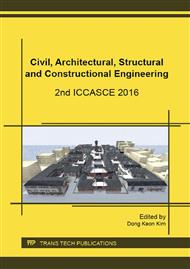p.219
p.227
p.234
p.241
p.249
p.255
p.262
p.267
p.273
Life-Cycle Low-Carbon Neighborhood: A Genetic Perspective in China
Abstract:
In the end of the 19th century, the concept of greenhouse effect has drawn greater attention and scientists begin to consider climate change as a potentially serious problem. The World Economic Forum’s Global Risks Report 2016 has considered the failure of climate change mitigation and adaptation as the greatest potential risk of 2016. To cope with climate change, scholars agree that low carbon is the inevitable choice of global development and urban neighborhood, as the basic functional unit of a city, is the basic space to achieve low carbon. Along with rapid economic growth, carbon emissions in China have being increasing which accompanied with another urban problem: the recession in old city, so we put neighborhood low-carbon renewal as an effective way to promoting sustainability. Along with the rapid development of life sciences, scholars have shown great interest in cross-over study with it while gene theory plays a crucial role and has been obtained significant results over the years. In this paper, we comprehensively analyzed the achievement in cross-over study between building sciences and life sciences and introduced gene theory into the research of neighborhood low-carbon to provide the government a new theoretical tool.
Info:
Periodical:
Pages:
249-254
Citation:
Online since:
November 2016
Authors:
Keywords:
Price:
Сopyright:
© 2017 Trans Tech Publications Ltd. All Rights Reserved
Share:
Citation:


